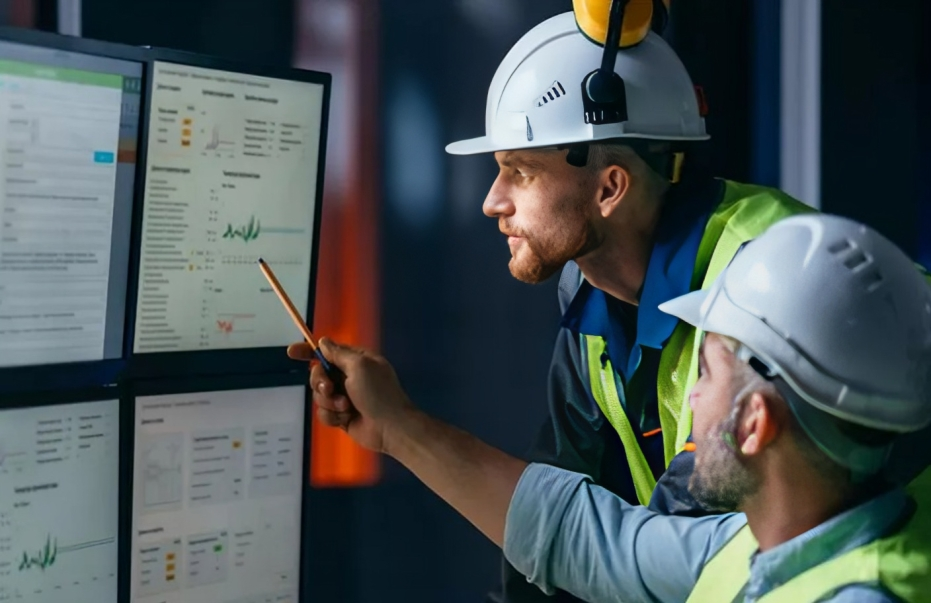Why AI Optimization is Outperforming Traditional Advanced Process Control
In today’s process industries, operational efficiency is everything. For decades, Advanced Process Control (APC) has been the go-to technology for keeping systems stable and efficient. But a new player—AI optimization—is raising the bar.
Rather than replacing APC, AI is increasingly being integrated into control strategies, delivering faster adaptation, deeper insights, and smarter decision-making in complex, dynamic environments.
Here’s how AI optimization compares to traditional APC—and why many plants are embracing a hybrid approach that combines the best of both worlds.

The Traditional Role of APC
Advanced Process Control, often built around Model Predictive Control (MPC), is rooted in first-principles models such as thermodynamics or fluid flow equations. Operators define setpoints, and APC keeps the process within those bounds using PID or MPC algorithms.
Strengths of APC:
- Highly reliable in stable, well-understood conditions
- Proven safety and regulatory compliance
- Predictable performance when process dynamics are fixed
Limitations:
- Requires manual model updates to adapt to changing feed quality, ambient conditions, or equipment aging
- Optimizes locally rather than globally
- Struggles with fast-changing or highly nonlinear processes
- Needs periodic re-identification and expert tuning
How AI Optimization Works
AI optimization takes a data-first approach. Instead of relying solely on static equations, AI systems use machine learning, neural networks, and reinforcement learning to learn directly from real plant data—both historical and real-time sensor streams.
These models can:
- Predict system behavior across a wide range of conditions
- Continuously identify optimal operating points
- Adapt in milliseconds to shifts in process behavior
- Spot hidden inefficiencies through digital twin simulations
- Predict and prevent equipment failures
With adaptive learning rates, AI can detect and correct for model drift automatically, avoiding the need for costly offline re-modeling.
AI vs. APC: The Future of Process Optimization
Advanced Process Control (APC) has long been the workhorse of industrial process optimization. By leveraging physics-based models and control loops, APC improves stability, minimizes variability, and keeps operations within safe limits. But as industries face growing demands for efficiency, adaptability, and sustainability, Artificial Intelligence (AI) optimization is emerging as a powerful next step.
Scope & Flexibility
APC operates within the confines of model-based control—typically linear or mildly nonlinear—with a limited set of variables. This makes it effective for well-understood processes, but less suited to rapidly changing conditions. AI, on the other hand, is data-driven and inherently multivariable. It can handle nonlinear dynamics and uncertainty, enabling optimization in more complex and variable environments.
Adaptability
APC systems often require manual updates when process conditions change or models drift, leading to slower responses. AI-based optimization can continuously learn from incoming data, adapting in real time without the need for lengthy manual recalibration.
Optimization Horizon
While APC focuses on short-term, local objectives (like maintaining setpoints or minimizing variability), AI can extend the horizon to long-term and multi-objective goals—such as balancing cost, energy consumption, throughput, and sustainability targets simultaneously.
Deployment
Deploying APC can be expert-intensive, with long lead times to build, validate, and tune models. In contrast, AI solutions increasingly benefit from AutoML and prebuilt frameworks, enabling faster deployment and easier scalability across multiple units or sites.
Data Utilization
APC typically uses data for control feedback and periodic calibration. AI leverages the full spectrum of available information—historical datasets, real-time sensor feeds, and even contextual business or environmental data—unlocking insights and optimizations that go beyond the capabilities of traditional control systems.
The Hybrid Approach: Best of Both Worlds
The most forward-thinking plants are adopting AI + APC hybrid architectures.
In this setup:
- APC ensures baseline stability and safety
- AI provides dynamic optimization targets and adapts to changing conditions
Common operating modes:
- Advisory (Open-loop): AI recommends setpoints; operators review and apply.
- Autonomous (Closed-loop): AI writes directly to APC/DCS setpoints.
- Supervisory: AI sets overarching targets while APC handles local control.
Deployment typically starts with offline simulations and validation, moves to operator-in-the-loop advisory mode, and gradually shifts toward semi-automatic or fully autonomous control.
AI’s Challenges
AI’s performance depends heavily on:
- High-quality, well-integrated plant data
- Robust computing infrastructure
- Overcoming regulatory and explainability concerns
Key Benefits of AI + APC
- Stability: APC maintains safe, proven control loops
- Intelligence: AI optimizes proactively and predicts issues before they happen
- Adaptability: AI evolves with changing plant conditions
- Efficiency: Reduced waste, improved energy use, and higher throughput
Final Word
Advanced Process Control will remain a cornerstone of industrial operations for years to come. But AI optimization is proving to be the sharper tool when processes are complex, data is abundant, and conditions are constantly changing.
The winning strategy? Use APC for rock-solid stability and safety, and let AI handle high-level optimization. Together, they deliver a resilient, future-ready control system that maximizes performance while minimizing risk.
Visionaize’s Signal Miner combined with Advanced Process Control (APC) delivers a comprehensive, end-to-end optimization solution for industrial operations. Signal Miner leverages advanced AI algorithms to analyze vast amounts of historical and real-time plant data, uncover hidden patterns, and predict optimal setpoints. APC then takes these insights and ensures precise, stable control of critical process variables, maintaining safety and compliance while implementing performance improvements. Together, they bridge the gap between predictive intelligence and real-time execution—Signal Miner driving continuous, adaptive optimization, and APC ensuring robust, reliable control—resulting in higher efficiency, reduced downtime, lower operating costs, and consistently improved production outcomes.
 CoPilot
CoPilot